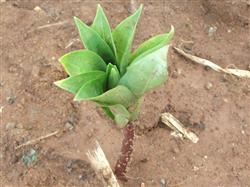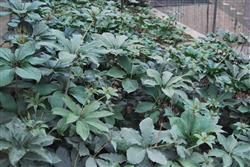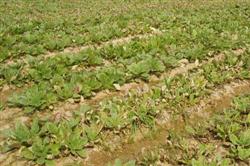How to control diseases and insect pests of Yunnan Zhonglou seedlings?

How does Yunnan Paridis seedling control pests and diseases? Please give the introduction method Yunnan Paris seedling diseases and insect pests can refer to the following methods for prevention and control: 1. Pest control. Seedling pests are mainly ground tiger, grubs and so on. The cutworm and grub are killed by using 90% crystal trichlorfon 180- 200g per mu, mixed with fried rice bran 8- 10kg to make poison bait. 2. Disease control. Seedling diseases mainly include root rot, damping-off and so on. The root rot disease was caused by high humidity, accumulated water, high temperature and wound of rhizome in June and July. The control method was to spray 250 times solution of agricultural streptomycin and 25% carbendazim wettable powder after seedling emergence. At the initial stage of disease, 1% ferrous sulfate solution or quicklime was applied to the diseased hole for disinfection. The main cause of damping-off disease is soil bacteria, ponding, control methods: early with 25% metalaxyl WP 300 times spray control, or with 50% carbendazim WP spray, spray once every 7 days, continuous spray 2- 3 times; after the disease, timely pull out the diseased plants, with copper sulfate 500 times irrigation disease. Click for more cultivation techniques Click for more cultivation techniques
- Prev

Sharing: planting techniques of heavy buildings
Chong Lou is a perennial herb with a long growth cycle. It takes 8 to 10 years from sowing to harvest. It is one of the main components of traditional Chinese medicine protected by Yunnan Baiyao and Gongxuening. In recent years, with the continuous increase in demand, the rate of mining far exceeds the speed of natural growth, resulting in rare resources.
- Next

How to cultivate Rehmannia glutinosa?
How to cultivate Rehmannia glutinosa? Is there a technical introduction to the cultivation of Rehmannia glutinosa? The cultivation of Rehmannia glutinosa can be planted with reference to the following methods: first, land selection and soil preparation. It is appropriate to choose sandy loam with deep, fertile and good drainage. Dig the soil more than 25 cm deep in the first winter or early spring and apply mature compost 2000-3000 per mu at the same time.
Related
- Fuxing push coffee new agricultural production and marketing class: lack of small-scale processing plants
- Jujube rice field leisure farm deep ploughing Yilan for five years to create a space for organic food and play
- Nongyu Farm-A trial of organic papaya for brave women with advanced technology
- Four points for attention in the prevention and control of diseases and insect pests of edible fungi
- How to add nutrient solution to Edible Fungi
- Is there any good way to control edible fungus mites?
- Open Inoculation Technology of Edible Fungi
- Is there any clever way to use fertilizer for edible fungus in winter?
- What agents are used to kill the pathogens of edible fungi in the mushroom shed?
- Rapid drying of Edible Fungi

